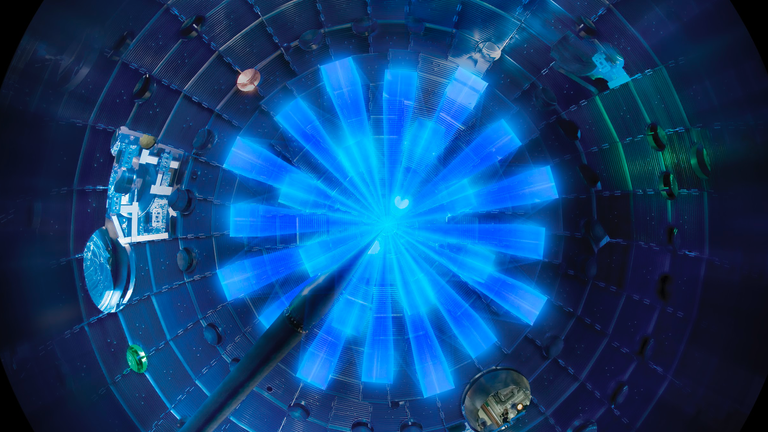This is a historic moment for fusion science.
For more than 70 years, scientists have pursued the dream of generating energy from nuclear fusion.
While nuclear fusion — the same reaction that powers the sun — has been achieved many times around the world in many different types of devices, all of these devices require a lot of energy to perform fusion.
this is their first time generate more energy From fusion reactions than they put into it.
Getting there is a fundamental step if you want to harvest energy from nuclear fusion.
But does this bring us closer to commercialization? nuclear fusion?
In theory, yes, it does. Someone has to be the first to prove that you can get energy from nuclear fusion on Earth.
But on a practical level, not so much.
First, consider that while the US team gets more energy out of their reaction chamber than they put into it, the total energy they have to put in the high energy lasers to create the star-like conditions for the reaction to occur is 100 times the total energy they get from the fusion what got in.
This is a 99% loss, not a net energy gain.
Another big caveat is the incredible National Ignition Facility (NIF) at the Lawrence Livermore Laboratory in California, which got the results, not the fusion reactor. It is an experimental tool whose main function is to test atomic weapons for the US government.
The fusion event they created lasted about 100 trillionths of a second and produced enough energy to boil about seven kettles. Huge amount of energy given the time scale – but hardly the energy of the future.
Building a machine means leveraging fusion in days or months, not nanoseconds. That energy is then captured somehow to convert it into electricity.
This is a very, very, tough scientific and engineering challenge.
Not the only game in town
Arguably, the NIF doesn’t get us any closer to that.
But luckily for fusion science and humanity, it’s not the only game in which one day benefits from a near-infinite source of energy with hardly any waste.
There are several state-funded fusion projects, a huge international collaboration called ITER in France, and more than 30 small commercial fusion ventures.
Almost all designs take into account access to power reactors.
But it’s also important to say that they’re not even close. The most common approach: using magnets to confine the charged fusion plasma in a spherical or toroidal reactor, is the most definitive path to success.
Some privately funded approaches, such as leading UK firm Tokomak Energy, aim to deliberately scale down so they can experiment with new materials and magnet technologies.
“The smaller the reactor, the more cost-effective it is,” said Dr. Greg Brittles, its senior magnet engineer.
“In development, it means we can get there faster. We can fail fast. We can learn fast. We can build things and learn.
“This will get us to convergence as quickly as possible, which is what everyone needs,” he said.
The company’s plan is to get electricity from pilot commercial reactors by the 2030s.
harness the power of the sun
But other experts cast doubt on those claims. Fusion scientist Dr Richard Pitts said some of the problems with building a commercial-scale reactor grow exponentially with scale.
Maybe he will, since he is one of the chief scientists of ITER, the world’s largest fusion experiment.
He argues that while smaller start-ups may have the latest technology, they simply don’t have the funding to solve the big problems of physics and engineering that fusion continues to raise.
“They are still a long way from getting to the scale needed to generate fusion energy from their devices,” Dr Pitts said.
“In order to do that, you need to get to the scale of the ITER factory. When you get to those scales, life becomes very complicated.”
To be sure, fusion is unlikely to happen fast enough, or at least on a large enough scale, to solve humanity’s current challenge: finding a new source of energy to replace fossil fuels.
We need to seek existing technology for this.
But today’s breakthrough does offer real hope that future generations can look forward to harnessing the sun’s energy on Earth. And all the benefits that might come.

